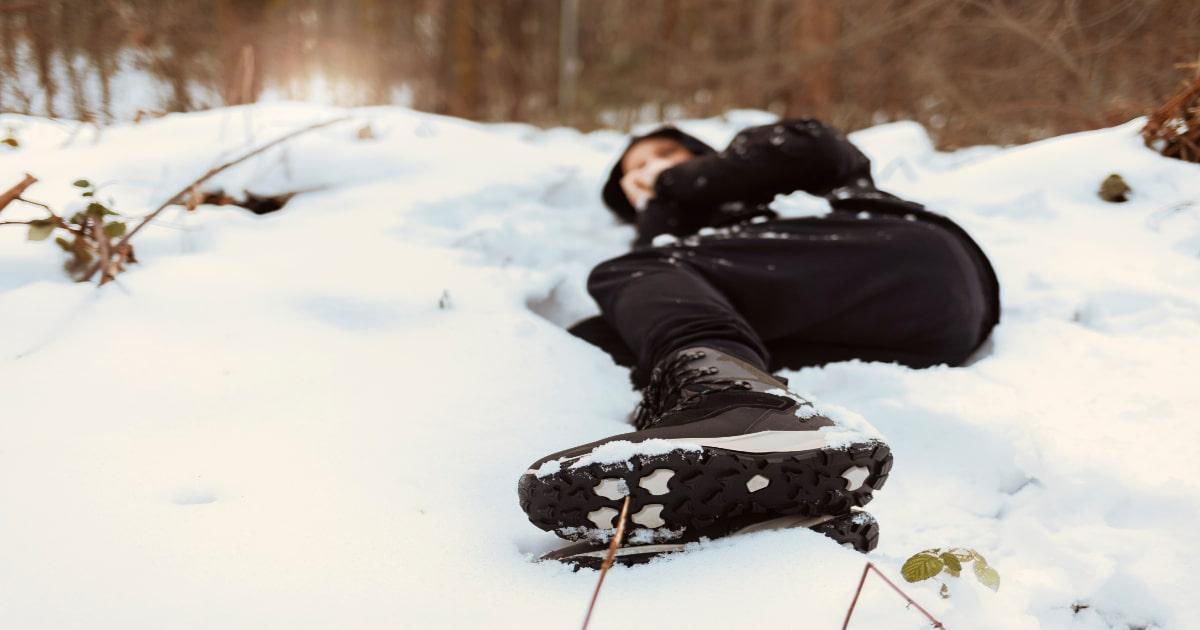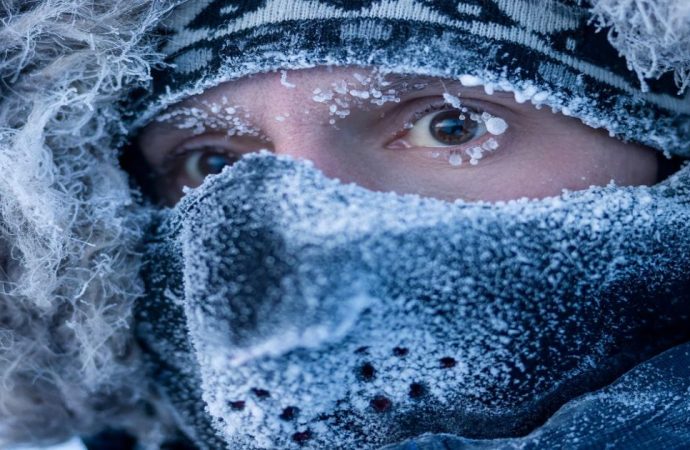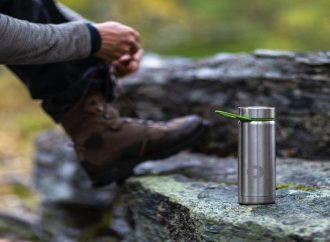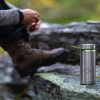If you’re bugging out, you will be far more exposed to the elements than would normally be the case. Although the UK climate isn’t extreme, it’s still possible to become very ill if you’re not properly protected from the weather. Hypothermia is one of the risks of bugging out, and it’s something that can catch
If you’re bugging out, you will be far more exposed to the elements than would normally be the case. Although the UK climate isn’t extreme, it’s still possible to become very ill if you’re not properly protected from the weather.
Hypothermia is one of the risks of bugging out, and it’s something that can catch people by surprise. You can develop hypothermia in a variety of different conditions, and it’s a myth that you have to be in freezing temperatures to become hypothermic.
It’s essential that hypothermia is taken seriously as if left untreated, hypothermia kills. You can’t rely on the mild seasonal weather to avoid hypothermia.
In the UK, scores of people die during the summer months due to hypothermia in normal conditions, let alone when they’re bugging out into open countryside in the dead of winter.
Education and preparation are key defences against hypothermia. If you know how to spot the condition, how to prevent it and how to treat it, you stand a good chance of survival.
What is Hypothermia?
Everybody has a normal core temperature which hovers around 37°C – this is known medically as normothermia. Hypo is a prefix which means below or under, so hypothermia means quite literally below normal temperature.
But hypothermia is more than just feeling a bit chilly or having cold hands. It’s a medical condition that can occur when your body ix exposed to cold temperatures for too long.
Hypothermia shouldn’t be mixed up with frostbite as both can occur together or separately. Unlike hypothermia, frostbite solely occurs in freezing conditions, not during the UK summer months. Although frostbite can be serious enough to cause amputations, hypothermia kills so it’s a far more critical condition.
Everyone’s core temperature is prone to fluctuating and it can drop, especially during sleep.
The medical definition of hypothermia is a core body temperature which has dropped to below 35°C. A decrease of 2°C may seem trivial but it’s a substantial drop and signals that your body is already experiencing serious difficulties.

The weather doesn’t need to be sub-zero temperatures for hypothermia to occur. Even in the UK many people suffer from hypothermia simply because they don’t properly prepare for being outdoors.
As a prepper, you should consider what you need to stay warm and protected in all weathers. Guarding against hypothermia is one of the key survival skills and it’s something you should be alert to all year round.
The risks of hypothermia in colder weather are obvious but if the ambient temperature is less than 28°C your body will start to get colder unless you have some protection.
This is how hypothermia occurs in the summer months, particularly at night, when people fail to use sufficient layers to stay warm.
You can also develop hypothermia if your clothing gets wet and doesn’t dry out quickly. This can rapidly cool your body down and unless the air temperature is very warm, hypothermia can set in.
The onset of hypothermia isn’t always obvious but the effects can be deadly. The organs in the body will start to fail, gradually shutting down and ultimately leading to death.
The good news is that it’s possible to reverse hypothermia but if you leave it too late, there may be long-term damage. Identifying it and treating the patient quickly is vital – and we’re going to look at that below.
The Five Stages of Hypothermia and Symptoms
As we’ve already established, hypothermia occurs when your body temperature starts to drop. Usually when the body starts to feel cold it can warm itself up by burning more calories and shivering.
However, when the heat loss is too much or too quick for the body to compensate, hypothermia occurs.
The symptoms of hypothermia are different and change as the condition progresses. Unhelpfully, with hypothermia some of the symptoms may ease and the patient may even start to feel too warm.
This is due to the body dilating blood vessels in a last effort to heat up cold tissues in the limbs. Therefore, you should be very careful about treating someone with hypothermia.
Don’t assume that they are recovered if they stop shivering or insist they’re not cold.
Some of the most common signs of hypothermia include:
- Shivering
- Confusion
- Slurred speech
- Slow or shallow breathing
- Lethargy and fatigue
- Lack of coordination
- Memory loss
- Weak, slow pulse rate
- Loss of consciousness
- No obvious respiration or pulse
Not all of these symptoms will be present at every stage.
Clinically, hypothermia can be split into five different stages:
- HT 1 (mild hypothermia) – shivering, consciousness appears relatively normal
- HT 2 (moderate hypothermia) – consciousness becomes impaired, shivering ceases
- HT 3 (severe hypothermia) – loss of consciousness, may be difficult to detect strong vital signs
- HT 4 (apparent death) – may be unable to detect any respiration or pulse
- HT 5 (death from hypothermia)
It is possible to treat hypothermia in stages 1-4, but in stage 4 you may need professional medical assistance – not always available if you’re bugging out. The importance of early identification cannot be overstated because once it starts, hypothermia can rapidly advance through the stages.
Four Different Types of Hypothermia
Although hypothermia is always due to a loss of body heat, there can be different reasons that this occurs.
These causes of hypothermia can be broadly divided into four different types:
Acute hypothermia
If your body temperature drops quickly, you can suffer from acute hypothermia. This may be as a result of sleeping outside in cold conditions, or from falling in cold water, especially if you don’t have warm and dry clothes to change into.
Chronic hypothermia
Hypothermia doesn’t always occur suddenly; it can have a very slow onset if you’re constantly exposed to low temperatures and don’t have warm clothing. Babies and the elderly are especially at risk of chronic hypothermia as it’s harder for them to maintain their body temperature.
Exhaustion hypothermia
When your body is exhausted, it is unable to produce the necessary heat to maintain your core temperature. This is known as exhaustion hypothermia and can be caused by substance abuse or a variety of health conditions.
It can also occur after vigorous exercise in cold conditions, it’s often seen in fell runners, so be careful of bugging out in cold temperatures when you are panicked and need to travel a long distance on foot.
Perioperative hypothermia
This type of hypothermia is less likely to occur in a survival situation, but it’s included here for completeness. Perioperative hypothermia develops after surgery in a hospital due to the body’s difficulty in maintaining heat after anaesthesia.
How to Avoid Getting Hypothermia

Some people are more vulnerable to hypothermia, either due to the medication they are taking or a medical condition. These medical conditions either make it more difficult to regulate body temperature, or the individuals is less likely to notice a change in how cold they feel.
However, there are some ways to avoid hypothermia which work for everyone. If you know someone you are with is particularly vulnerable, it’s probably a good idea to keep a close eye on their temperature and be vigilant for early signs of hypothermia.
Effective ways for a prepper to avoid hypothermia while bugging out include:
- Avoid alcohol and caffeine as both dilate the blood vessels and cause you to lose body heat
- Wear multiple layers of loose clothing rather than one thick layer
- Protect your neck and head with a scarf and a hat
- Hands should be covered with gloves and feet should be kept warm with socks
- Remove wet clothing as soon as possible; the longer it remains on your body, the greater impact it can have on your core temperature
- Drink water rather than sucking on snow or ice
- Make sure your food intake is sufficient – maintaining a core temperature is harder for the body in cold weather
How to Treat Hypothermia
Hypothermia can have devastating consequences but it’s treatable at almost every stage. The goal is the same no matter what stage of hypothermia has been reached: prevent further heat loss and help the body to warm back up.
The ways you can help an individual recover from hypothermia depend how severe the hypothermia is. In the early stages relatively simple methods can be effective but later stages will require professional medical attention.
Treat the hypothermia depending on the stage the patient is at:
Stage HT 1
Mild hypothermia is relatively straightforward to treat and if the patient is a healthy, adult they should be able to make a full recovery quite quickly. Change any wet clothing, ensure the patient is dry and warm and give them a hot, sweet drink.
You can encourage them to do some gentle exercise as they start to recover; this will raise their body temperature further. If they are not able to move around, heat packs or rocks warmed in a fire wrapped in an item of clothing can be placed in the groin and under the armpits to facilitate warming.
Stage HT 2
Patients who have developed moderate hypothermia need to be handled more carefully. This is because cardiac arrhythmias can develop as a direct reaction to the cold.
Unlike stage HT 1, patients shouldn’t be asked to actively assist with their own treatment.
As before, wet clothing should be removed and the patient should be kept warm, and placed in dry clothing. Heat packs should be positioned under the armpits, in the groin, around the trunk and the neck.
Hot sweet drinks can be helpful but these should only be given under direct supervision where you are certain that the patient is able to properly swallow.
Although you’re bugging out, if there’s any way to get to a hospital, it’s highly advisable for the patient to be properly checked.
Stage HT 3
If the patient progresses to severe hypothermia, it’s unlikely that they will respond to any stimuli. There will be signs of life, such as a pulse and respiratory movement, but it may be difficult to spot and much weaker than usual.
Due to the slowness of their life signs, you should check for a pulse and breathing for at least a minute before determining that they are absent.
Gentle handling is imperative to prevent cardiac damage. The patient must not be given anything to eat or drink, but preventing further heat loss is vital.
Heat packs, warm clothing and blankets can help the patient to recover warmth but there’s a very good chance they will require cardiac monitoring, and may require medical treatment from a facility that has a heart bypass machine.
Stage HT 4
It can be impossible to tell whether a hypothermia patient is in HT 4 or actually deceased. With no response to stimuli and no signs of life, they will appear to be dead. Despite this, there have been many accounts of patients who have been successfully revived from this profoundly hypothermic state.
Very gentle handling is critical, with heat packs, insulation and blankets preventing further heat loss and providing warmth. Proper medical care as soon as possible will be instrumental in determining whether the patient recovers.
CPR should be initiated but only when it is certain that it can be sustained. Treatment in a hospital with a bypass facility will be needed – a requirement that is not available for preppers in a survival situation.
If you know the person has already reached stage HT 3, make preparations for them to be transported to the nearest medical facility.
When warming someone with hypothermia, covering their heads, hands and feet can speed up the warming process.
It can also be useful to use your own body heat to provide warmth. If there are two or more healthy individuals, each of you can lie under the blankets either side of the patient so they receive a transfer of body heat from both directions.
Don’t be tempted to give alcohol to someone with hypothermia as you could inadvertently make things worse. This is because alcohol causes the blood vessels to dilate, moving heat away from the organs and reducing the core temperature.
Summary
The UK climate is normally considered to be mild so if you’re an adult who’s healthy and well, it’s easy to underestimate how cold it can get and how quickly this can affect your body temperature.
Hypothermia is a serious condition that can strike at any time, and must be taken seriously if you want to survive.
Protecting yourself against hypothermia means ensuring that you have enough food so you might need to go foraging, which you can read about here. Moving around will also help you keep your body temperature up.
Stay alert to the risk of hypothermia in all weathers, and be respectful of the fact that cold kills. Identify hypothermia early and it’s treatable without needing hospital care so be vigilant for signs in yourself and others that the cold is having an effect, and you should be safe.





















